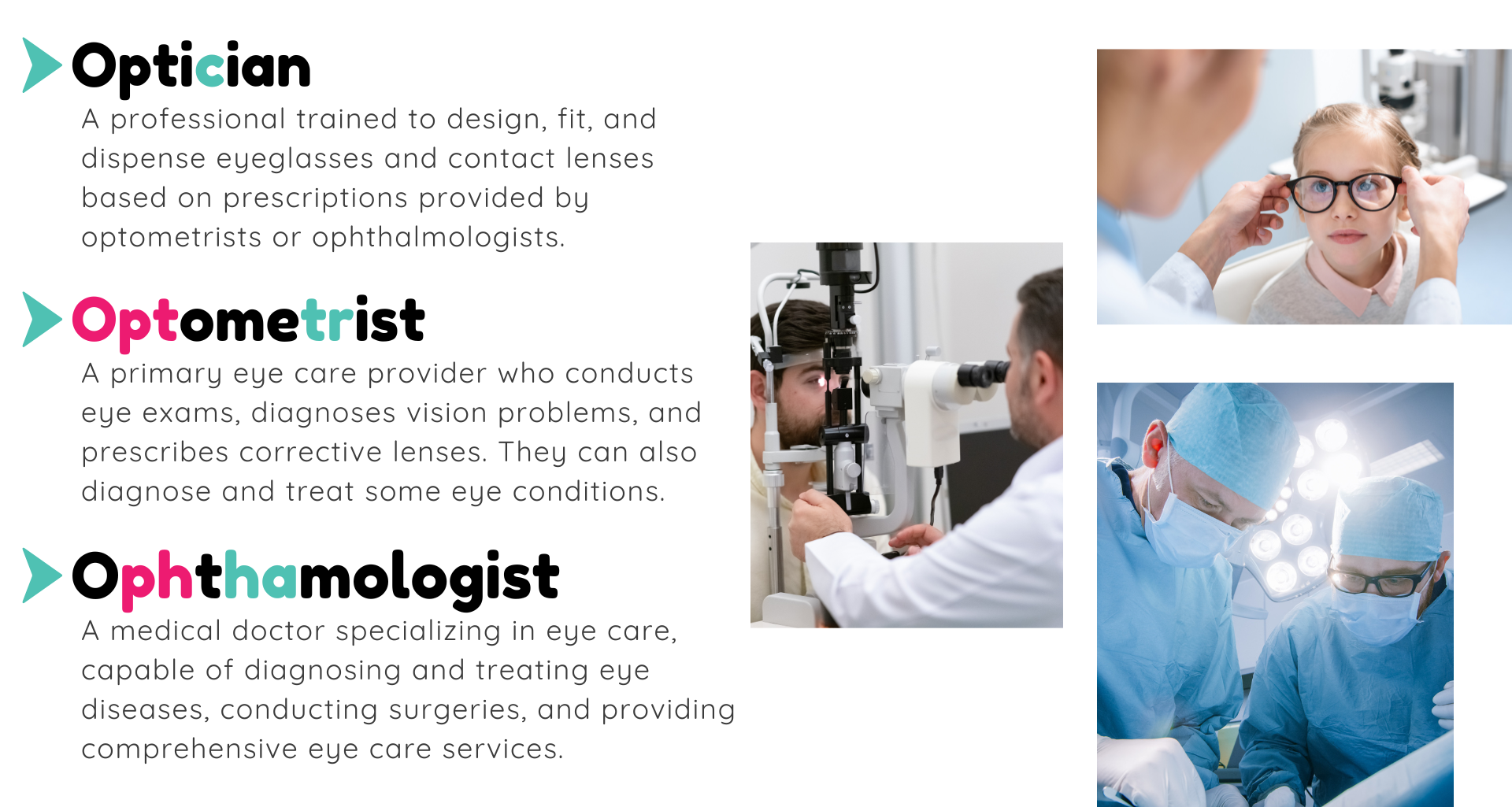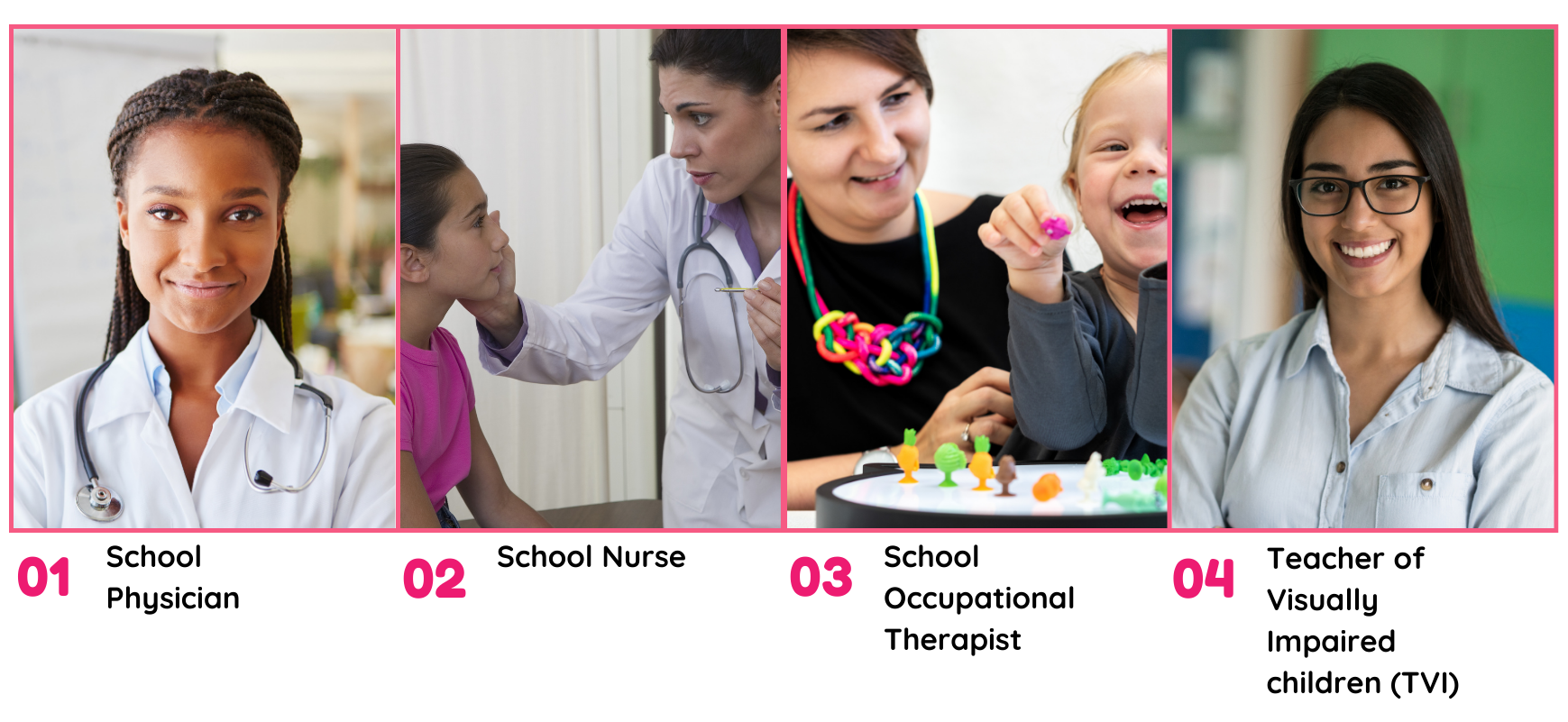Hey there, fellow occupational therapists and curious readers!
Let’s talk about something super important in our field – vision! Understanding how vision works and spotting any potential deficits can make a huge difference in the therapy we provide. After all, vision plays a vital role in our daily activities and occupation. When a child experiences visual impairments, it can really impact their educational performance.
In this blog post, we’re going to dive deep into the world of vision within occupational therapy. We’ll explore the key terms related to vision care and why they matter. Plus, we’ll shine a light on the signs and potential misdiagnosis of vision difficulties in children.
So, get ready to gain some valuable insights and tips that can help us make a positive impact on the lives of the kids we work with. Let’s join hands to enhance our understanding of vision in occupational therapy! Stay tuned for more exciting content coming your way. 😊
The Scope of Vision in Occupational Therapy
According to the Individuals with Disabilities Education Act (IDEA), visual impairment is “any impairment in vision that adversely affects a child’s educational performance.” (IDEA; Pub.L. 108-446)
This broad definition encompasses various conditions, including ocular pathology, brain injury, and ocular motor issues, making vision a significant aspect within occupational therapy (Office of Special Education and Rehabilitation Services, 2017).
Understanding Key Terms
Let’s unravel the mystery behind vision care professionals – the optician, optometrist, and ophthalmologist. Understanding their unique roles is key to getting the best eye care possible.

School Professionals that Look at Vision
In a school setting, we have a bunch of fantastic professionals working together to evaluate and tackle any vision issues. So, if you’ve ever wondered about the team behind your child’s vision care at school, we’re here to shed light on their amazing contributions and the magic they bring to the table.

- School Physician: Conducts medical assessments and may refer students for further vision evaluations.
- School Nurse: Assists in identifying visual concerns and may facilitate vision screenings.
- School Occupational Therapist: A vital member of the team responsible for identifying and addressing vision-related challenges that affect a child’s occupation and education.
- Teacher of Visually Impaired children (TVI): Provides specialized instruction and support for students with visual impairments.
Vision Difficulties
may look like something else
Vision difficulties can often manifest in unexpected ways, leading to misdiagnosis.
Signs of Vision Difficulties
-
- Tilting head during reading
- Poorly spaced letters during writing
- Poor attention
- Rubbing eyes
- Difficulty reading
- Headaches
May Look Like
-
- ADHD
- Autism
- Behavior
- Reading disabilities
- Motor delays
Recognizing vision difficulties and how they can sometimes be mistaken for other conditions is essential. It’s essential to be aware of this because misdiagnoses can happen, and we want to make sure every child gets the right help and support they need.
Imagine this: eye movement issues, which can be found in 8% of kids, might look a lot like symptoms of ADHD. That’s why it’s crucial to dig deeper and properly understand what’s going on. And did you know that children with autism may face challenges with accommodation and processing visual information? Understanding these nuances can make a big difference in providing the best care for our kids.
So, let’s keep our eyes wide open and be mindful of the possibilities. Together, we can ensure every child gets the right diagnosis and the support they deserve.
Two Different Models of Vision
For many individuals, vision concerns are commonly addressed through traditional eye exams, focusing on visual acuity, refractive disorders, and eye health. However, a more comprehensive approach, known as the Three-Component Model of Vision Examination, goes beyond the basics to assess additional aspects of visual function.
Traditional Eye Exam
The traditional eye exam is a standard evaluation performed by optometrists and ophthalmologists. It primarily centers around three key aspects of Visual Integrity:
1. Visual Acuity: This test measures a person’s ability to see at a specific distance. It involves reading letters or symbols from an eye chart to determine the clarity of vision.
2. Refractive Disorders: The evaluation of refractive errors, such as nearsightedness (myopia), farsightedness (hyperopia), astigmatism, or presbyopia. Corrective lenses, such as glasses or contact lenses, are prescribed to address these conditions.
3. Eye Health: A thorough examination of the external and internal structures of the eye to detect any signs of eye diseases, such as cataracts, glaucoma, or macular degeneration.
While the traditional eye exam provides essential information about visual acuity and basic eye health, it may not fully capture other important aspects of visual function that can impact daily activities and performance.
Three-Component Model of Vision Examination
The Three-Component Model of Vision Examination offers a more comprehensive assessment, recognizing that vision encompasses various interconnected elements. It consists of three main components:
1. Visual Integrity (Visual Acuity, Refractive Disorders, Eye Health): This component aligns with the traditional eye exam, evaluating visual acuity, refractive errors, and overall eye health.
2. Visual Information Processing: This aspect explores how the brain processes visual information. It includes:
-
-
- Visual Motor Integration: Assessing how well visual information is coordinated with motor skills, such as eye-hand coordination and spatial awareness.
- Visual Analysis: Evaluating the ability to recognize and interpret visual stimuli, such as shapes, letters, and patterns.
- Visual-Spatial Skills: Measuring the capacity to perceive and understand spatial relationships, which is crucial for tasks like reading maps or following instructions.
-
3. Visual Efficiency: This component investigates how effectively the eyes work together as a team. It involves:
-
-
- Binocular Vision: Examining the coordination of both eyes to provide a single, unified image.
- Eye Movements: Assessing the ability to track objects smoothly, shift gaze quickly, and sustain focus as needed.
- Accommodation: Evaluating the eye’s ability to adjust focus between near and distant objects.
-
The Value of Comprehensive Vision Examination
The Three-Component Model of Vision Examination recognizes that vision is more than just seeing clearly. it encompasses how the brain processes and uses visual information. Identifying and addressing issues related to visual information processing and visual efficiency can be crucial, especially in children whose visual skills are still developing.
When it comes to eye exams, going beyond the basics can be a game-changer. A comprehensive vision examination can spot potential vision difficulties that might otherwise go unnoticed. Things like issues with visual information processing or visual efficiency can actually affect our reading, writing, learning, and daily activities. But don’t worry, because addressing these concerns early on can make a world of difference. It means getting the right help and interventions to optimize our vision and overall well-being.
While regular eye exams are essential, the Three-Component Model of Vision Examination takes it up a notch. It gives us a deeper understanding of how our vision really works, allowing for early detection and intervention. And you know what that means? It’s all about enhancing the quality of life for people of all ages!
Occupational therapists also play a critical role in a child’s education and daily life. By recognizing and addressing visual deficits, they can have a huge impact on a child’s development and their ability to participate in activities.
Let’s all work together, as professionals and individuals, to embrace the value of comprehensive vision examinations. They can truly promote optimal vision and overall visual well-being. So, if you’re an occupational therapist, don’t forget the power of advocating for comprehensive eye exams – it could be the missing puzzle piece for some kids! Remember, it’s not always sensory or ADHD; sometimes, it’s all about vision. So, let’s make a positive difference together!
